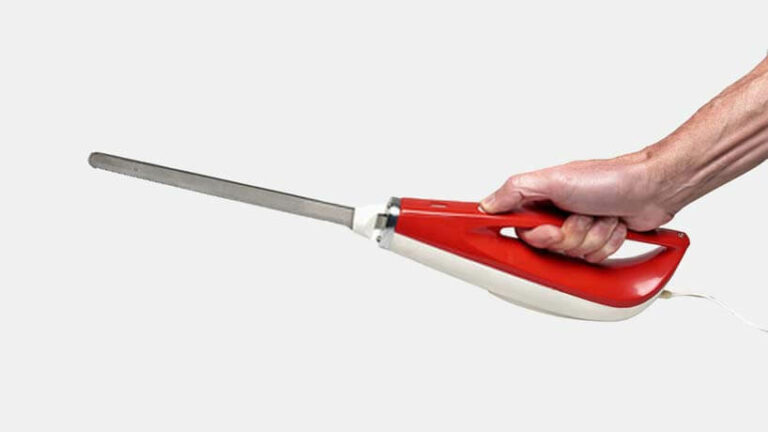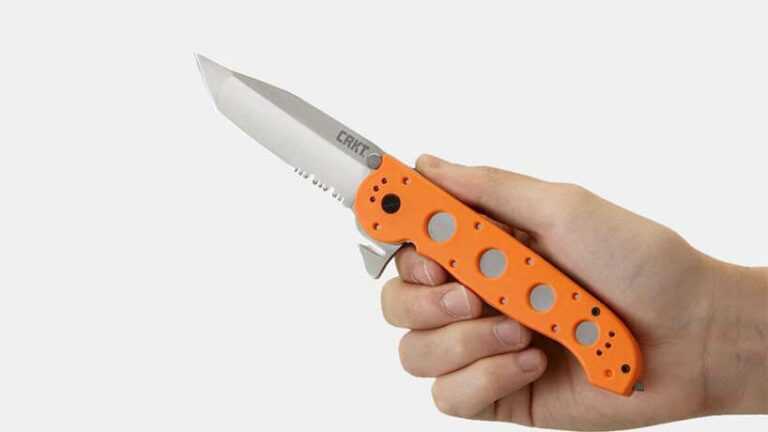Single and double bevel might sound like a term used at a bar or a type of casino game. That’s not the case at all; it is a term used to describe a knife blade’s edge. When shopping for a knife or searching online, you might have come across these terms and not known the meaning. “Double bevel sounds better, I’ll take that one,” you may have said at some point.
Well, maybe that’s not the best approach. Each type of blade edge will have its own unique characteristics, and understanding single and double bevel knives are essential so that you can buy a knife well suited to your needs. Single bevel edges have a different function to double bevels, and if you mix them up, it might be a little problematic.
What Is a Bevel-Edge?
A bevel refers to the part of the blade tapered into a sharp point for cutting. The edge of the blade is the part that leads into the bevel; you could think of the blade as having three parts. The first is the spine or back of the blade, which isn’t tapered at all. The second is the edge, which is slightly thinner. And lastly, the bevel, which is the cutting surface.
Single or Double Bevel?
A single bevel is only ground and angled on one side, whereas a double bevel is angled on both sides to the same degree. Understanding single and double bevel knives mean you learn that both types are useful, but for different purposes. The edge on a single bevel blade will have one flat side, with the other being tapered, and on the other hand, the edge will be evenly angled for a double bevel.
A double bevel knife is used more commonly in households for basic cooking tasks and is the preferred bevel type by the vast majority of people. The single bevel is adored by experienced chefs in all parts of the world. A single bevel allows for precision and accuracy, which is vital to top-notch chefs; they need to be able to cut thin slices quickly and effectively.
The advantage of a double bevel is that it can be used by both left and right-handed folks, which can’t be said about single bevels. Single bevel knives require different manufacturing for left and right-handed use; they are not the same thing.
What Is Single-Bevel Useful for?

One of the most valuable traits of this type of knife is its accuracy. If the knife is sharp and well maintained, then you’ll save so much time and energy because the cutting process will go by in a flash. Sushi knives are renowned for their filleting and slicing ability; this is simply due to their single bevel. You can find double bevel sushi knives, but they are not as efficient for high-speed work.
A single bevel edge is also more readily equipped to handle deboning procedures due to its flat surface. However, the blade’s steel needs to be very tough; otherwise, it will chip or dent. Classically trained chefs view single bevel knives as a necessity for their line of work; delicate and accurate slicing is an essential part of the process and can only be achieved via single bevel edges.
What Is Double-Bevel Useful for?
As previously mentioned, double bevel knives are more useful for home-style cooking because they can be used easily by lefties and righties, and they don’t have a slanting motion when cutting. A double bevel isn’t inferior in a professional kitchen setting; they are beneficial for more bulky cuts or more time-consuming tasks where accuracy is not an issue but, in principle, more useful for the home kitchen.
When you use a single bevel knife with the wrong hand, e.g., a left-hander using a right-handed knife. Then you’ll get very wobbly cutting, and the slicing will be all over the place because the angled bevel pushes the knife in the wrong direction. Double bevels are also more durable and quite sturdy if they are made from good quality materials.
This is great for cutting through bones or chopping tough vegetables and hard fruit. The double bevel edge is sometimes sharpened to different angles on either side; for instance, one side can be tapered to 15 degrees while the other side to 20 degrees; this gives the knife a more extensive range of function to perform different types of cuts.
Which Type of Bevel Is Sharper?
There are a couple of crucial factors to consider when talking about sharpness and understanding single and double bevel knives. The first is steel type; if you have a single bevel tapered down to 13 degrees and made from bad quality steel, then we would say that the edge is sharp, but in reality, this type of blade would become dull quickly. So should it be considered sharp?
In general, a single bevel will have superior sharpness and slicing effectiveness to a double bevel, but it is not the case every time. The steel will determine if the blade will stand the test of time. The second factor to consider is the angle to which the bevel is ground; this is measured in degrees. Bevels can range from anywhere between 15 and 30 degrees.
Some single-bevel Japanese-style Santoku knives or cleaver knives are ground to 10 degrees to give them unrivaled sharpness, but these knives are made from tremendously hard steel, which allows them to keep their edge very well. So, for the most part, single bevels are more reliable when it comes to efficient cutting.
But double bevels are better at staying sharp because the force of cutting is split between the two sides, whereas with a single bevel, one side takes all the pressure. Single bevels are also easier to sharpen because you only have to work with one side. A double bevel needs to be sharpened on both edges, which can cause an imbalance if not done correctly.
Final Thoughts
If you’re on the hunt for a razor-sharp blade to effortlessly slice through anything or even just an essential steak knife for home, then starting with bevel checking is a great idea. It’s important to know what it is you’re going to be using the knife for.
If you intend on using it for home cooking and simple recipes, then maybe going the route of a less complicated double bevel edge is a good start. Just get something with good hardness and high-quality steel so that you don’t have to worry about sharpening it. If you’re aspiring to become a master chef, then work on a good basis.
Start with a single bevel to gain experience using these types of blades because rest assured you’ll need it in the future. A single bevel shouldn’t let you down if you treat it right and get the correct hand side. Double-check it before you buy it because sometimes you might forget to specify if you’re left or right-handed when ordering.
Now that you have a better understanding of single and double bevel knives, try out both options, with different bevel angles and different cooking styles; you’ll soon learn what you like and dislike. So if you’re ever at a friend’s house, you can randomly start pulling out all their knives to tell them which bevel they have and why it’s useful or not. You’re the expert now.







